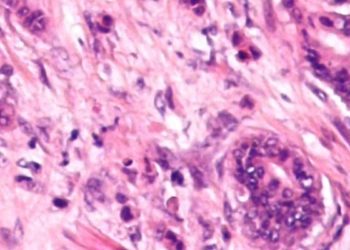No difference between cesarean section and vaginal delivery of twins
Image: PD
1. There was no difference between planned cesarean section and vaginal delivery of twins in terms of neonatal or maternal morbidity and mortality.
Evidence Rating Level: 1 (Excellent)
Study Rundown: Twin pregnancies have a greater risk for adverse perinatal events than singleton pregnancies. Previous observational studies have suggested that planned cesarean section for delivery of twins reduces adverse events compared to vaginal delivery. This randomized controlled trial was designed to provide a definitive comparison of planned cesarean section versus planned vaginal delivery for twins between 32 and 39 weeks gestation.
There was no difference between the two groups in terms of neonatal morbidity and mortality within 28 days after delivery. There was also no difference in maternal morbidity and mortality within 28 days postpartum. As found in previous studies, the second twin had a higher risk of adverse events than the first twin. However, the mode of delivery made no difference with respect to outcomes for the second twin. Of note, 43.8% of women assigned to the planned vaginal delivery group ultimately received cesarean sections.
The results of this study are generalizable only to centers with obstetricians who are experienced at vaginal delivery of twins and where emergent cesarean sections can be performed within 30 minutes if needed. In such settings, either vaginal delivery or cesarean section is reasonable. These results do not hold for other settings.
Click to read the study, published today in NEJM
Click to read an accompanying editorial in NEJM
Relevant Reading: Cesarean delivery for twins: a systematic review and meta-analysis
In-Depth [randomized, controlled trial]: In this study, 2804 women with dichorionic or monochorionic-diamniotic twin pregnancies between 32 and 39 weeks gestation were randomized to either planned cesarean delivery or vaginal delivery. The frequency of adverse neonatal events within 28 days of birth was 2.2% in the cesarean delivery group and 1.9% in the vaginal delivery group (P=0.49). The frequency of adverse maternal events within 28 days of birth was 7.3% in the cesarean delivery group and 8.5% in the vaginal delivery group (P=0.29). Adverse neonatal events included death, birth trauma, respiratory difficulties, and infection. Adverse maternal events included death, significant blood loss, birth-related injuries, and infection.
By Tomi Jun and Adrienne Cheung
More from this author: Early risk factor for progression of cystic fibrosis identified, Gut microbes implicated in stroke and heart attacks: new dietary link, New leukemia mutation offers therapeutic targets, Childhood ADHD associated with increased risk of suicide, A marker of aggressive liver cancer and potential therapeutic target identified
© 2013 2minutemedicine.com. All rights reserved. No works may be reproduced without expressed written consent from 2minutemedicine.com. Disclaimer: We present factual information directly from peer reviewed medical journals. No post should be construed as medical advice and is not intended as such by the authors, editors, staff or by 2minutemedicine.com. PLEASE SEE A HEALTHCARE PROVIDER IN YOUR AREA IF YOU SEEK MEDICAL ADVICE OF ANY SORT.





